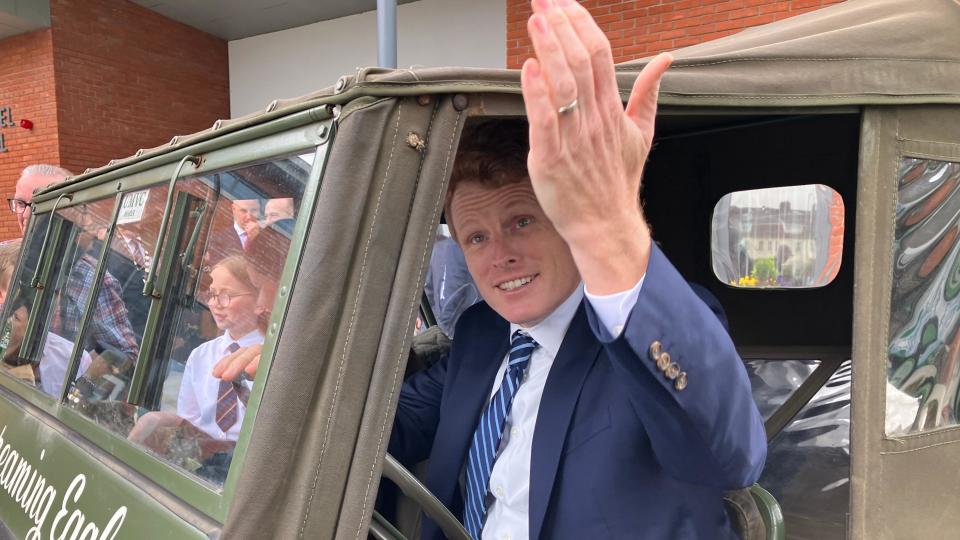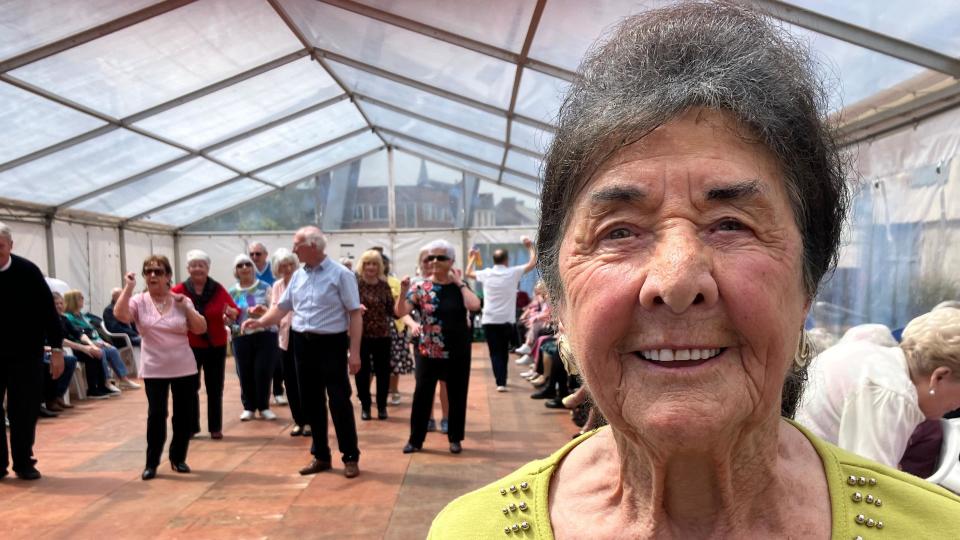D-Day 80th commemorations in NI and France
Events have been held across Northern Ireland and France to mark the 80th anniversary of D-Day.
The Royal Irish Regiment (R Irish) took part in a sunrise service on Thursday at Sword Beach in Normandy - the spot where soldiers landed 80 years ago to begin their fight against the occupying German forces.
In Northern Ireland, beacons were lit in towns and cities on Thursday night.
A veterans’ charity also lit one at the top of Slieve Donard to coincide with commemorations at the UK’s other highest peaks.
Buildings have also been lit up blue.
D-Day anniversary events

Events were held across Northern Ireland throughout the day.
A remembrance service took place at the cenotaph in Londonderry on Thursday morning, where DUP leader Gavin Robinson laid a wreath.
In Lisburn events also began early, with a D-Day proclamation read by a town crier from the Irish Linen Centre and Lisburn Museum.
This was followed by the unveiling of a flag of peace and a wreath laying by the Royal British Legion. A beacon was later lit in Castle Gardens.
Beacons have also been lit in Newtownards, Bangor and Ballyhalbert.
In Armagh, a service was held at St Patrick’s Church of Ireland Cathedral at 20:00 before the city’s beacon was lit in Market Square.
A town crier read a proclamation at Enniskillen Castle on Thursday morning, and a service was held at St Macartin’s Cathedral.
Enniskillen Castle was also turned blue to mark the occasion.

A blue plaque was unveiled at Brookeborough in honour of World War Two Field Marshal Viscount Alan Brooke.
In Ballynahinch, swing time and ballroom music events were held in Market Square on Thursday evening before the lighting of a beacon.
Portrush East Strand held an event featuring members of the armed forces and a pipes and drum performance.
Elsewhere, in County Mayo, events were held at Blacksod Lighthouse, where the crucial weather forecast to give D-Day the green light originated.

At first light on Sword Beach, there was silence on the sand as soldiers from the Royal Irish Regiment paused to reflect along with young Army Cadets.
They were there to pay respect to the Royal Ulster Rifles; the only British regiment to land by air and sea on D-Day.
Teenagers Hope Durnin and Evie Sloan said it was emotional to be involved.
Massed pipes and drums were played on the spot where Piper Bill Millin came ashore on D-Day.
Piper Millin was commander Lord Lovat's personal piper in the 1st Commando Brigade when he landed at the beach in Normandy on June 6, 1944.
He was the only man who wore a kilt during the landings - the same Cameron tartan kilt his father had worn in Flanders during World War One.
Maj Gen Colin Weir of the Royal Irish Regiment said the Royal Ulster Rifles (RUR) who served on D-Day were a “unique band of brothers”.
It was made up of soldiers from across Ireland and Great Britain, volunteers for the “great crusade to secure freedom for Europe”.
Maj Gen Weir said it was the duty of his regiment to carry on their legacy and pass on “some of that experience of service and sacrifice”.

US Special Envoy for Northern Ireland Joe Kennedy met pupils at Enniskillen Model Primary School where wartime American vehicles were on display.
The school’s playing fields were the site of a World War Two army camp where Allied Commander General Dwight D Eisenhower inspected troops making final preparations for D-Day.

Ninety-six-year-old Phyllis McCartney was 16 when D-Day happened. She recalled memories from that time while at a D-Day tea dance in Lisburn.
"When you are younger you think of the people and are sorry," she said.
"But now, listening to men talking about how their friend was killed beside them, it breaks my heart.
“I know one family who lived up the street – he was called Marley – he was in it and he was killed."
What happened on D-Day?
Codenamed Operation Overlord, the Allies’ invasion of France on 6 June 1944 marked a breakthrough in the war.
Shortly after midnight gliders landed as troops seized key locations on the flanks of the Normandy beaches.
By morning, tens of thousands of troops, involving soldiers from across Ireland, landed on five assault zones.
They were met by machine gun fire, mortar shells and snipers, but managed to push inland.
The battles to come would lead to the liberation of France and a push towards Berlin.
Additional reporting by Julian Fowler, Cormac Campbell and Keiron Tourish.


